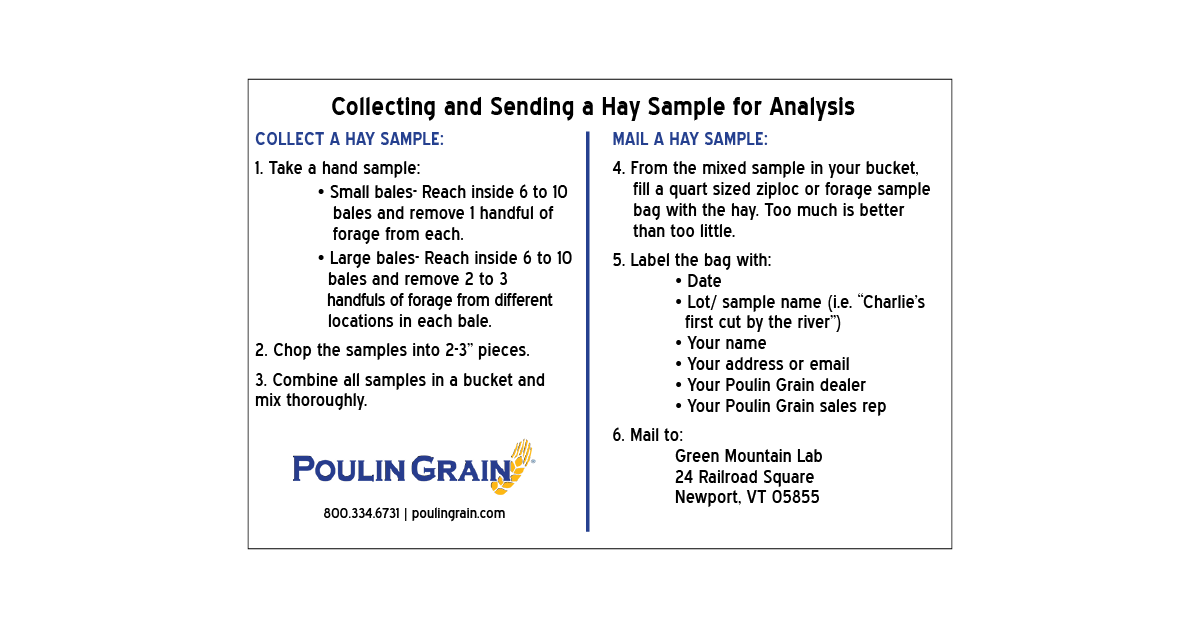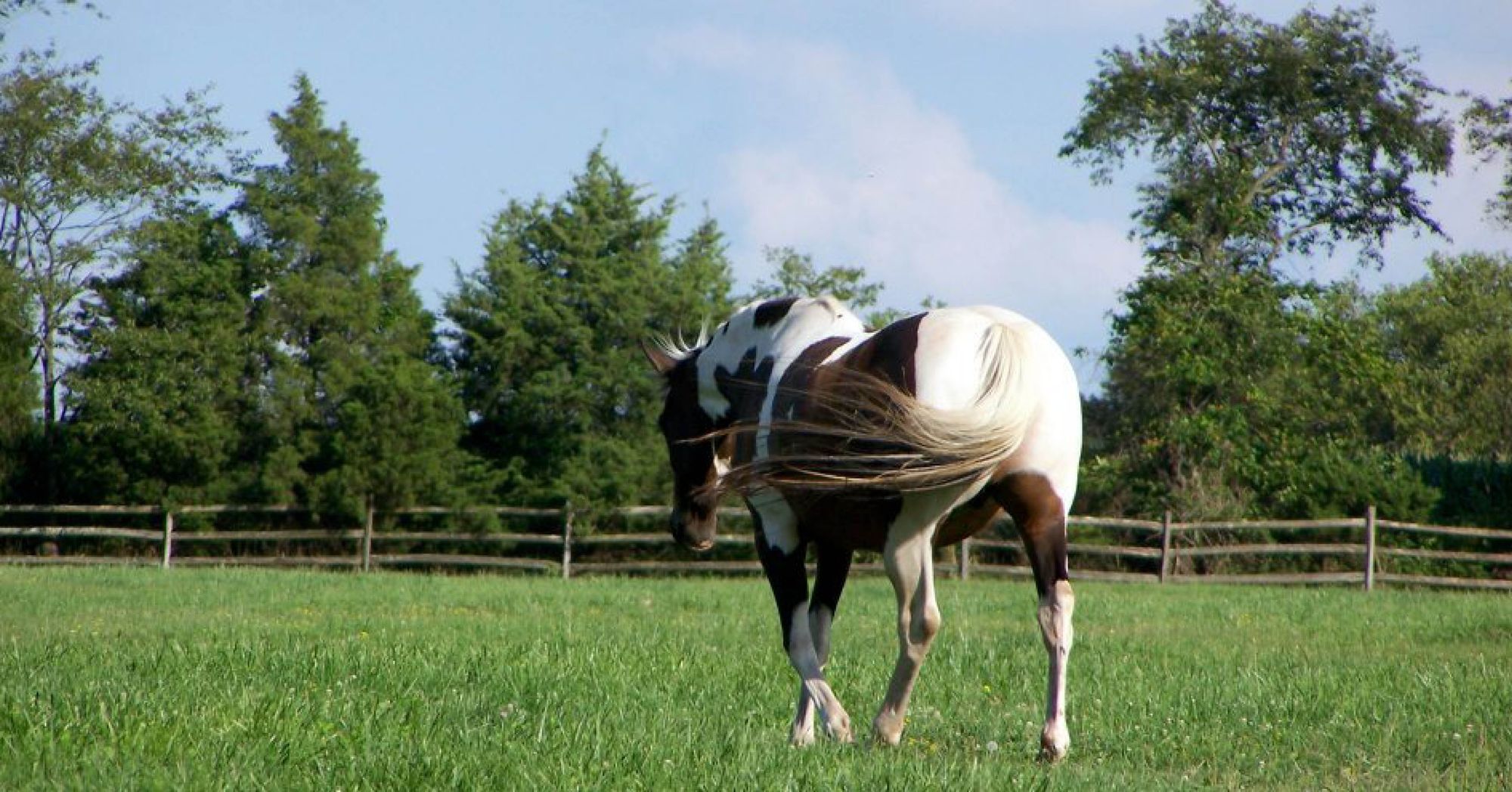Research has shown that pasture-induced laminitis occurs at times of rapid grass growth. The accumulation of certain carbohydrates including fructans, starches, and sugars (Non-Structural Carbohydrates, NSC) in pasture forage during the spring, early summer and fall, particularly after rainfall precipitate this laminitis. Therefore we must carefully manage pasture turnout and forage intake in horses and ponies that are at risk for developing laminitis or are currently affected.
We also understand that horses suffering from insulin resistance (IR) and/or Cushings (Pituitary Pars Intermedia Dysfunction, PPID), as well as horses and ponies with the ‘‘easy keeper’’ phenotype, that are often overweight or obese and may be persistently hyperinsulinemic, should also be managed carefully with regard to their carbohydrate intake.
Decisions regarding whether an effected animal can be allowed access to pasture, and to what extent, must be made on a case- by-case basis; however, in general:
• The affected horse or pony should be held off pasture until there has been complete resolution of the acute laminitis episode and, when indicated, diagnostic testing for IR and PPID. If there is no evidence of IR or PPID, a gradual reintroduction to pasture may be considered. Start with 1 to 2 hours of grazing once or twice per day or with turnout for longer periods if the horse is fitted with a grazing muzzle. More caution may be required when pasture is green and growing rapidly (eg, in spring).
• Obese insulin resistant horses should be held off pasture for a longer period (2–3 months), allowing time for implementation of management changes (dietary restriction, increased physical activity) that result in improved insulin sensitivity. Even then, it is advisable to severely restrict or avoid any grazing during periods in which the pasture forage NSC content is likely to be high (eg, spring and early summer, after summer and fall rains that cause the grass to turn green, pastures that have been frosted or drought stressed).
• Some insulin resistant horses and ponies with history of repeated episodes of laminitis require permanent housing in a dry lot because they seem to be susceptible to further episodes of laminitis in the face of even small variations in pasture availability and nutrient content.
Strategies for avoiding high NSC intake by horses and ponies at risk for pasture laminitis:
• Animals predisposed to laminitis should be denied access to grass pastures, particularly during the spring.
• At other times of the year, limit the amount of turnout time each day (eg, 1–3 hours) and turn animals out late at night (after 8:00pm) or early in the morning, removing them from pasture by mid-morning at the latest (before 10:00am, because NSC levels are likely to be at their lowest late at night through early morning).
• Alternatively, limit the size of the available pasture by use of temporary fencing to create small paddocks or use a grazing muzzle.
• Avoid pastures that have not been properly managed by regular grazing or cutting, because mature stemmy grasses may contain more fructan (it is stored in the stem).
• Do not turn horses out onto pasture that has been exposed to low temperatures in conjunction with bright sunlight, such as occurs in the fall after a flush of growth or on bright, cool winter days, because cold temperatures reduce grass growth, resulting in the accumulation of fructan.
• Do not allow animals to graze on recently cut stubble, because fructan is stored predominantly in the stem.
Animals denied access to pasture for most or all of the day, require provision of alternative feed stuffs. Horses at maintenance require approximately 2.0% of their body weight as forage, or forage plus forage supplement to meet daily nutrient requirements.
Grains and fortified feeds should be selected carefully for low NSC content, and the feeding of other ‘‘treats,’’ such as carrots and apples, should be discouraged. Forage (as hay or hay substitute, such as Forage Extender Pellets or cubes) should be the primary, if not sole energy providing component of the ration. Alfalfa hay or other legumes, such as clover, on average, have lower NSC content when compared with grass hay but have considerably higher calorie/energy content. Generalities regarding carbohydrate value of forages should in most cases, however, be avoided. Ideally, hay should be analyzed for Water Soluble Carbohydrates (WSC), Ethanol Soluble Carbohydrates (ESC) and starch, and should be reviewed before selection. The addition of WSC and starch is the closest to what we call NSC and for the at-risk or laminitic horse, this value should be less than 10% in a hay analysis. Caution should be taken when feeding significant amounts of poorly digestible hay and forages; anecdotally, this practice increases the risk for impaction colic in some animals.
Forage Analysis by Poulin Grain
The basis of any equine diet is forage, and success is dependent upon understanding exactly what nutrients that forage provides. Poulin Grain offers complimentary forage testing, interpretation of the analysis, and our skilled feed specialists utilize results to formulate a balanced diet based on your horse's individual needs.

Poulin Grain's line of E-TEC® Super Premium Horse Feeds contain the latest science based technology to provide horses with a low carb performance line of feeds.
All E-TEC® feeds contain:
- NEW! CHROMIUM for increased glucose utilization and improved immune function, growth, and overall health.
- Live cell yeast for increased digestion and absorption of nutrients.
- 100% organic selenium and increased levels of 100% natural vitamin E to support health and immune function
- Highly digestible fiber sources for a healthy hind gut
- Optimum amino acids for performance and muscle recovery
- Optimal balance of vitamins and minerals to satisfy requirements in the northeast USA
For a list of Poulin Grain Equine Feed Carbohydrate Contents, click HERE.
Poulin Grain's feed specialists are available to discuss the best diet options for your horse's individual needs. For one-on-one complimentary service, please call 800-334-6731.

If you would like to learn more about Poulin Grain's complimentary forage analysis, diet balancing for your horse, and other personalized services, please visit www.poulingrain.com or call 800-334-6731 to speak to a feed specialist near you!



